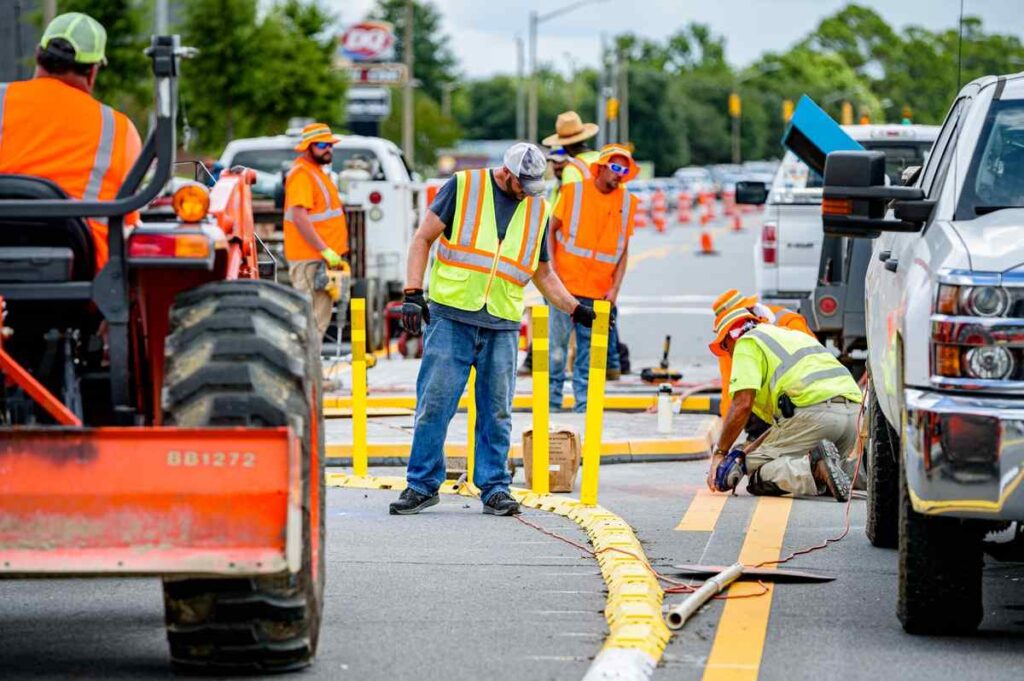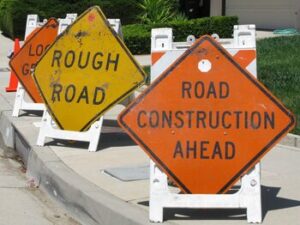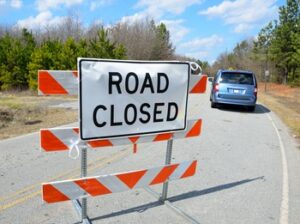
Navigating the Path: The Significance of Road Construction Signs in Safe Infrastructure Development
As our cities evolve and infrastructure expands, road construction becomes a common sight. In the midst of these transformations, road construction signs emerge as unsung heroes, guiding motorists, pedestrians, and workers alike through the intricate dance of development. This article delves into the crucial role of road construction signs, exploring their purpose, standardized symbols, and the impact they have on ensuring safety and efficiency in construction zones.
I. The Purpose of Road Construction Signs
- Safety First:
- Hazard Communication: Road construction signs communicate potential hazards, ensuring that drivers and pedestrians are aware of upcoming changes in the road environment.
- Preventing Accidents: Clear signage reduces the risk of accidents by providing timely information about construction activities and changes in traffic patterns.
- Traffic Flow Management:
- Lane Closures: Signs indicating lane closures guide drivers through the construction zone, minimizing congestion and maintaining a smooth traffic flow.
- Temporary Route Information: Detour signs redirect traffic efficiently, preventing confusion and delays during construction activities.
 II. Standardized Symbols and Colors
II. Standardized Symbols and Colors
- Uniformity Across Regions:
- International Standards: Road construction signs adhere to international standards, ensuring consistency in symbols and colors regardless of geographical location.
- Recognizable Icons: Standardized symbols such as traffic cones, construction workers, and machinery convey a universal language that is easily understood by road users.
- Colors for Clarity:
- Orange and White Dominance: The use of orange and white as predominant colors in construction signs enhances visibility and draws attention to important information.
- Contrast for Readability: High-contrast colors ensure that signs are readable both in daylight and under artificial lighting, contributing to safety.
III. Types of Road Construction Signs
- Warning Signs:
- Caution Ahead: Yellow diamond-shaped signs warn drivers of potential hazards such as road work, uneven surfaces, or changes in traffic patterns.
- Speed Reduction Advisories: Signs indicating reduced speed limits in construction zones promote safety and prevent accidents.
- Regulatory Signs:
- Lane Closure Information: Regulatory signs inform drivers about lane closures, temporary stop signs, and other rules specific to the construction zone.
- Restrictions and Prohibitions: Signs may indicate restrictions on certain maneuvers or prohibit certain actions to maintain a safe environment.
IV. Importance of Pedestrian Safety
- Sidewalk Closures and Detours:
- Clear Pedestrian Guidance: Signs inform pedestrians about sidewalk closures, detours, and safe crossing points, ensuring their safety.
- Visual and Auditory Alerts: Additional signage may include visual and auditory signals to alert pedestrians to construction activities and potential hazards.
- Worker Protection:
- Identification of Work Zones: Signs demarcate work zones, alerting drivers to areas where construction personnel and equipment may be present.
- Enhanced Visibility: Reflective materials on signs enhance visibility, especially during low-light conditions, reducing the risk of accidents involving construction workers.
V. Challenges and Solutions
- Driver Compliance:
- Education and Awareness: Challenges in driver compliance can be addressed through educational campaigns emphasizing the importance of adhering to construction zone signage.
- Enforcement Measures: Collaborative efforts between law enforcement and construction authorities can enhance compliance through strict enforcement of speed limits and rules.
- Temporary Sign Maintenance:
- Regular Inspections: Regular inspections and maintenance of temporary signs ensure that they remain visible and effective throughout the construction period.
- Replacement of Faded Signs: Signs exposed to sunlight and harsh weather conditions may fade over time, necessitating their timely replacement to maintain clarity.
VI. Technological Advancements in Signage
- Digital Message Boards:
- Real-Time Information: Digital message boards provide real-time updates on traffic conditions, lane closures, and alternative routes, enhancing communication with road users.
- Dynamic Information Display: These boards can dynamically change information based on the evolving conditions within the construction zone.
- Smart Signage Systems:
- Sensor Integration: Smart signage systems may integrate sensors to monitor traffic flow and adjust signage in real-time based on the volume of vehicles.
- Connected Infrastructure: Advancements in connectivity enable seamless communication between road construction signs and central traffic management systems.
VII. Community Engagement and Communication
- Public Awareness Campaigns:
- Community Involvement: Engaging with the local community through awareness campaigns fosters understanding and cooperation during construction projects.
- Communication Platforms: Utilizing various communication platforms, such as social media and community meetings, keeps residents informed about upcoming road work and associated impacts.
- Feedback Mechanisms:
- Feedback Collection: Establishing channels for public feedback allows authorities to address concerns, make necessary adjustments, and improve the effectiveness of construction signage.
- Community Collaboration: Involving the community in the planning process promotes a collaborative approach, garnering support for road construction initiatives.
Paving the Way for Safe and Efficient Road Construction
Road construction signs serve as beacons of guidance, ensuring that the intricate dance of development unfolds with safety and efficiency. As technology continues to advance, smart signage systems and digital message boards are poised to revolutionize how we communicate within construction zones. Yet, amidst the digital evolution, the core principles of standardized symbols, clear colors, and community engagement remain foundational to successful road construction signage. By recognizing the importance of these signs as more than markers of construction but as guardians of safety and order, we pave the way for a future where roads are not just pathways but conduits of progress, securely navigated through the language of construction signs.
